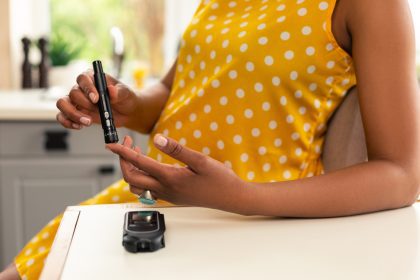Exercise timing plays a critical role in blood sugar management for people with type 1 diabetes, and morning workouts offer distinct advantages for many. The dawn phenomenon—a natural rise in blood glucose levels during early morning hours—creates a helpful buffer that reduces hypoglycemia risk during activity.
Morning exercise allows the body a full day to process and respond to the metabolic changes triggered by physical activity. This extended recovery window helps prevent the delayed hypoglycemic effect that can occur 7-11 hours after exercise, potentially pushing that window into waking hours rather than during sleep.
The hormonal environment in the morning typically includes higher levels of cortisol and growth hormone, both of which have glucose-raising effects. This natural hormonal pattern provides some protection against rapid drops in blood sugar during exercise sessions.
People who exercise in the morning often report more consistent blood glucose patterns throughout the remainder of their day. This stability creates a more predictable environment for insulin dosing and meal planning, further reducing the risk of overnight lows.
Morning workouts align well with typical meal patterns, allowing for pre-exercise carbohydrate consumption without disrupting evening insulin routines that might otherwise need adjustment to prevent nighttime hypoglycemia.
Afternoon exercise requires specific meal planning
For those who prefer or need to exercise in the afternoon, strategic meal planning becomes essential to prevent delayed hypoglycemia during sleeping hours. The timing of both pre- and post-workout nutrition significantly impacts overnight blood sugar stability.
A substantial afternoon snack containing both protein and complex carbohydrates approximately 30-45 minutes before exercise helps establish a baseline glucose level that reduces the risk of immediate drops during activity. The protein component slows digestion and provides a more gradual release of glucose.
Post-exercise nutrition becomes even more critical with afternoon workouts. Consuming a balanced meal within 90 minutes after completing physical activity helps replenish glycogen stores and stabilizes blood glucose levels as the body recovers.
The composition of the evening meal following afternoon exercise deserves careful attention. Including moderate amounts of fat and protein alongside carbohydrates helps extend digestion time, providing a more sustained glucose release that can help prevent overnight lows.
Many people with type 1 diabetes find that reducing their mealtime insulin dose for dinner by 10-20% following afternoon exercise helps compensate for the increased insulin sensitivity that persists for several hours after activity. This adjustment must be made carefully and in consultation with healthcare providers.
Evening workouts demand vigilant monitoring and adjustments
Exercise in the evening hours presents the highest risk for overnight hypoglycemia but remains manageable with proper precautions. The proximity to sleeping hours means the body’s enhanced glucose uptake will coincide with the period when monitoring becomes more difficult.
People who exercise in the evening often benefit from setting temporary basal rate reductions on their insulin pumps for the overnight period. This reduction typically ranges from 10-30% below normal rates for 6-8 hours following activity, though individual needs vary considerably.
A bedtime snack becomes non-negotiable following evening exercise. The ideal composition includes a foundation of complex carbohydrates paired with protein and healthy fats—a combination that provides sustained glucose release throughout the night without causing morning hyperglycemia.
Blood glucose monitoring takes on heightened importance after evening workouts. Checking levels immediately after exercise, before the bedtime snack, and setting an alarm for a middle-of-night check allows for corrective action if levels begin trending downward.
Some individuals find that certain types of evening exercise create more predictable blood sugar responses than others. Generally, steady-state aerobic activities like walking or light cycling tend to cause less dramatic overnight drops than high-intensity interval workouts or strength training sessions.
Intensity level influences timing decisions
The type and intensity of physical activity significantly affect how exercise timing decisions should be approached. The metabolic impact of a gentle walk differs dramatically from that of an intense basketball game or heavy weightlifting session.
High-intensity anaerobic activities like sprinting or heavy resistance training can actually cause initial rises in blood glucose due to the release of stress hormones. However, these activities can still lead to delayed hypoglycemia hours later as muscles replenish their glycogen stores.
For high-intensity workouts, morning timing often proves safest, as the delayed drop in glucose levels typically occurs during waking hours when detection and treatment remain straightforward. If evening high-intensity exercise cannot be avoided, even more aggressive reductions in overnight insulin may be necessary.
Moderate-intensity aerobic activities like jogging, swimming, or cycling have a more predictable and immediate glucose-lowering effect. These activities can be safer to perform in the afternoon with proper meal planning and insulin adjustments.
Mixed activities that combine both aerobic and anaerobic elements create complex glycemic responses that may require more frequent monitoring regardless of timing. The variable intensity leads to less predictable patterns that necessitate greater vigilance.
Extended duration exercise requires special consideration regardless of time of day. Activities lasting longer than 60 minutes substantially increase the risk of both immediate and delayed hypoglycemia, often necessitating both reduction in insulin doses and increased carbohydrate consumption.
Consistency in timing improves predictability
Perhaps the most valuable strategy for preventing overnight lows involves maintaining consistency in exercise timing. The body adapts to regular patterns, making blood glucose responses more predictable when physical activity occurs at similar times each day.
People who exercise at the same time daily often develop a clearer understanding of how their bodies respond, allowing them to make precise adjustments to insulin dosing and carbohydrate intake. This personalized knowledge proves invaluable in preventing overnight hypoglycemia.
Sudden changes in either the timing or intensity of workouts introduce variables that increase the risk of unexpected blood glucose fluctuations. When schedule changes become necessary, extra monitoring helps manage the less predictable response.
Many people with type 1 diabetes find that maintaining detailed records of exercise timing, intensity, blood glucose trends, and insulin adjustments helps identify personal patterns. These records allow for refinement of strategies over time, improving overnight safety.
The consistency principle extends beyond exercise to include meal timing and insulin administration. When all three elements follow regular patterns, the system becomes more stable and predictable, reducing the risk of overnight lows regardless of when exercise occurs.
Technology provides valuable safeguards
Modern diabetes management technologies offer significant advantages for preventing exercise-related overnight hypoglycemia. These tools provide both predictive capabilities and emergency safety nets that enhance confidence in exercise timing decisions.
Continuous glucose monitors (CGMs) with alarm features serve as essential tools for those who exercise regularly, especially in the evening hours. The ability to set low alerts and predictive warnings provides critical notification before dangerous lows develop during sleep.
Smart insulin pumps with automated suspension features can detect declining glucose levels and temporarily halt insulin delivery—a particularly valuable safeguard following evening exercise when the body’s insulin sensitivity remains elevated.
Hybrid closed-loop insulin delivery systems that automatically adjust basal rates based on CGM data offer perhaps the most robust protection against overnight lows. These systems can respond to the gradual decline in glucose levels that often follows exercise without requiring manual intervention.
Mobile applications that track exercise, nutrition, insulin dosing, and glucose trends help identify patterns specific to different exercise timing scenarios. This data-driven approach supports more informed decisions about when to schedule physical activity for optimal overnight safety.
Remote monitoring capabilities allow partners or family members to receive alerts about potential nighttime lows, adding an additional layer of safety for those concerned about sleeping through CGM alarms after particularly strenuous exercise sessions.
The technological ecosystem surrounding type 1 diabetes management continues to evolve, offering increasingly sophisticated tools that make exercise timing decisions more flexible while maintaining overnight safety. These advances enable more people with type 1 diabetes to enjoy the benefits of regular physical activity without compromising nighttime glucose control.
The intersection of careful exercise timing, consistent patterns, appropriate nutrition, insulin adjustments, and technological tools creates a framework that allows people with type 1 diabetes to remain physically active while minimizing the risk of dangerous overnight hypoglycemia. With attentive planning and personalized strategies, exercise becomes a sustainable part of diabetes management rather than a source of nighttime anxiety.
















